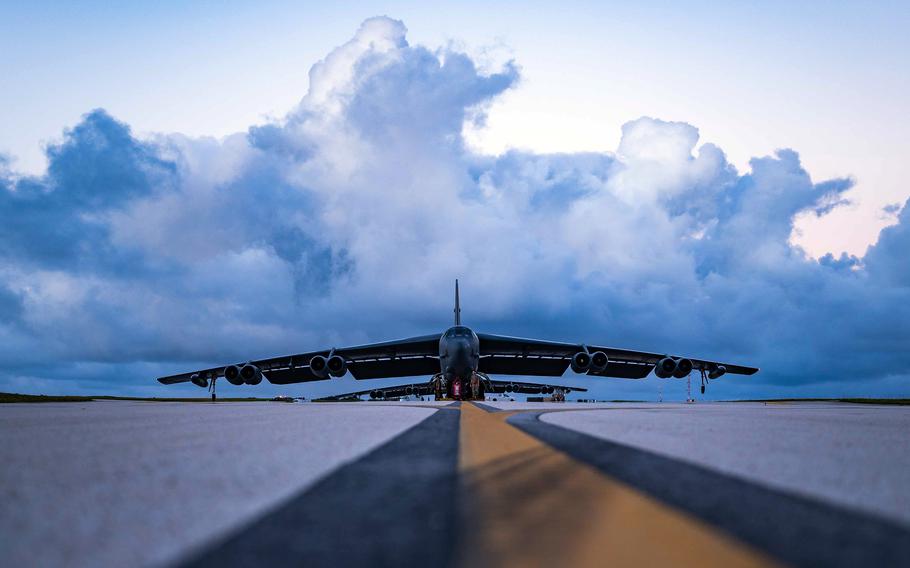
A B-52 Stratofortress from the 2nd Bomb Wing at Barksdale Air Force Base, La., parks at Andersen Air Force Base, Guam, April 1, 2023. (William Pugh/U.S. Air Force)
Long-range, nuclear-capable bombers have touched down on Guam, where they’re slated to take on a series of missions meant to hone their crews’ skills and project U.S. airpower across the Indo-Pacific.
An undisclosed number of B-52 Stratofortresses and airmen with the 2nd Bomb Wing will “actively train during operations and exercises while integrating alongside Allies and partners throughout the region,” Pacific Air Forces announced in a news release Friday.
The wing is based at Barksdale Air Force Base, La. The B-52s’ arrival marks at least the fourth bomber task force mission this year at Andersen Air Force Base.
The deployments “demonstrate the credibility of U.S. forces to address a global security environment that is more diverse and uncertain than at any other time in recent history,” according to the release.
Andersen spokeswoman 1st Lt. Ariana Wilkinson referred all questions to Pacific Air Forces in Hawaii. A spokesperson there did not immediately respond to an email requesting additional information Monday evening.
The task force mission kicked off two days before a B-52 from the 96th Bomb Squadron, 2nd Bomb Wing, participated in an unprecedented exercise with South Korea and Japan on Sunday.
That B-52 joined two F-16 Fighting Falcons out of Osan Air Base, South Korea; two South Korean F-15K Slam Eagles; and two Japanese F-2s for an aerial drill that “demonstrated their security cooperation and solidarity,” the South Korean air force said in a news release that day.
Days earlier, the bomber became the first B-52 to touch down on the Korean Peninsula in at least 30 years. It landed Oct. 17 at Cheongju International Airport, about 60 miles south of Seoul, and took park in flyovers with South Korean F-35A Lightning IIs during Seoul’s Aerospace and Defense Exhibition that week.
The Air Force has routinely sent bombers — either B-52s or B-1 Lancers — to Guam since the task force missions began in 2018. The deployments typically last between two and six weeks.
The current mission coincides with the completion of a $2.4 million drying tower at Andersen that allows airmen to dry large drag parachutes — deployed by B-52s when they land — in as little as 12 hours. Manually, the process can take up to two days.
The project is expected to quadruple turnaround time for B-52 bomber crews, Wilkinson, Andersen’s spokesman, told Stars and Stripes on Monday.